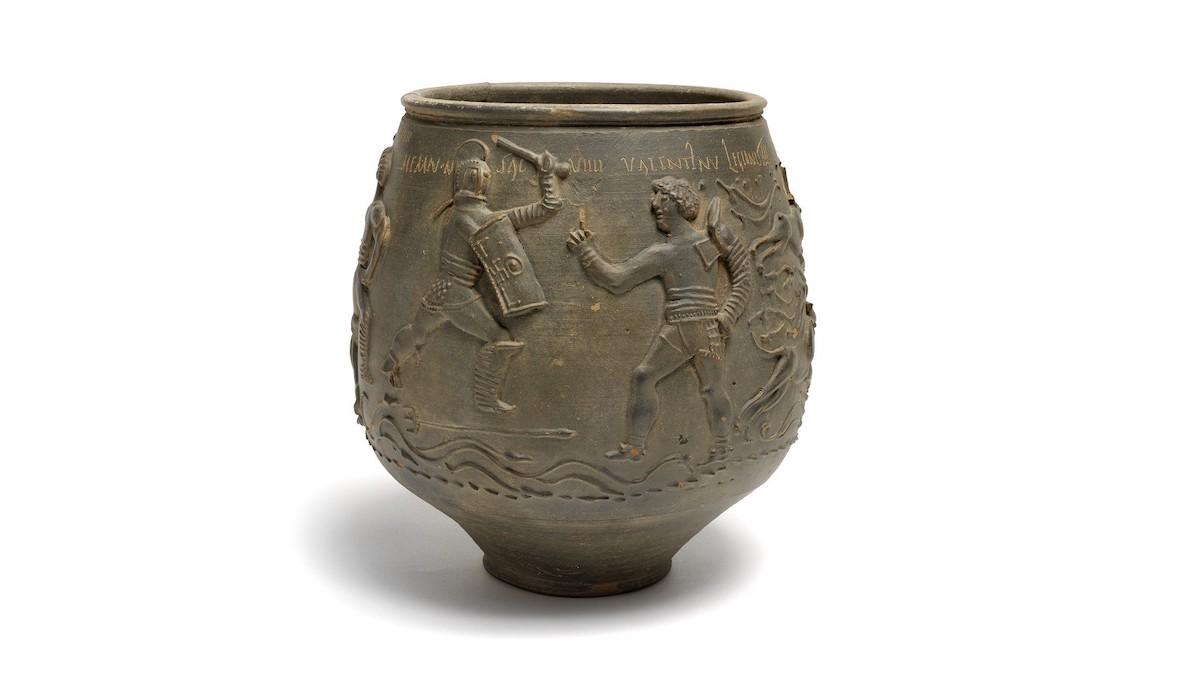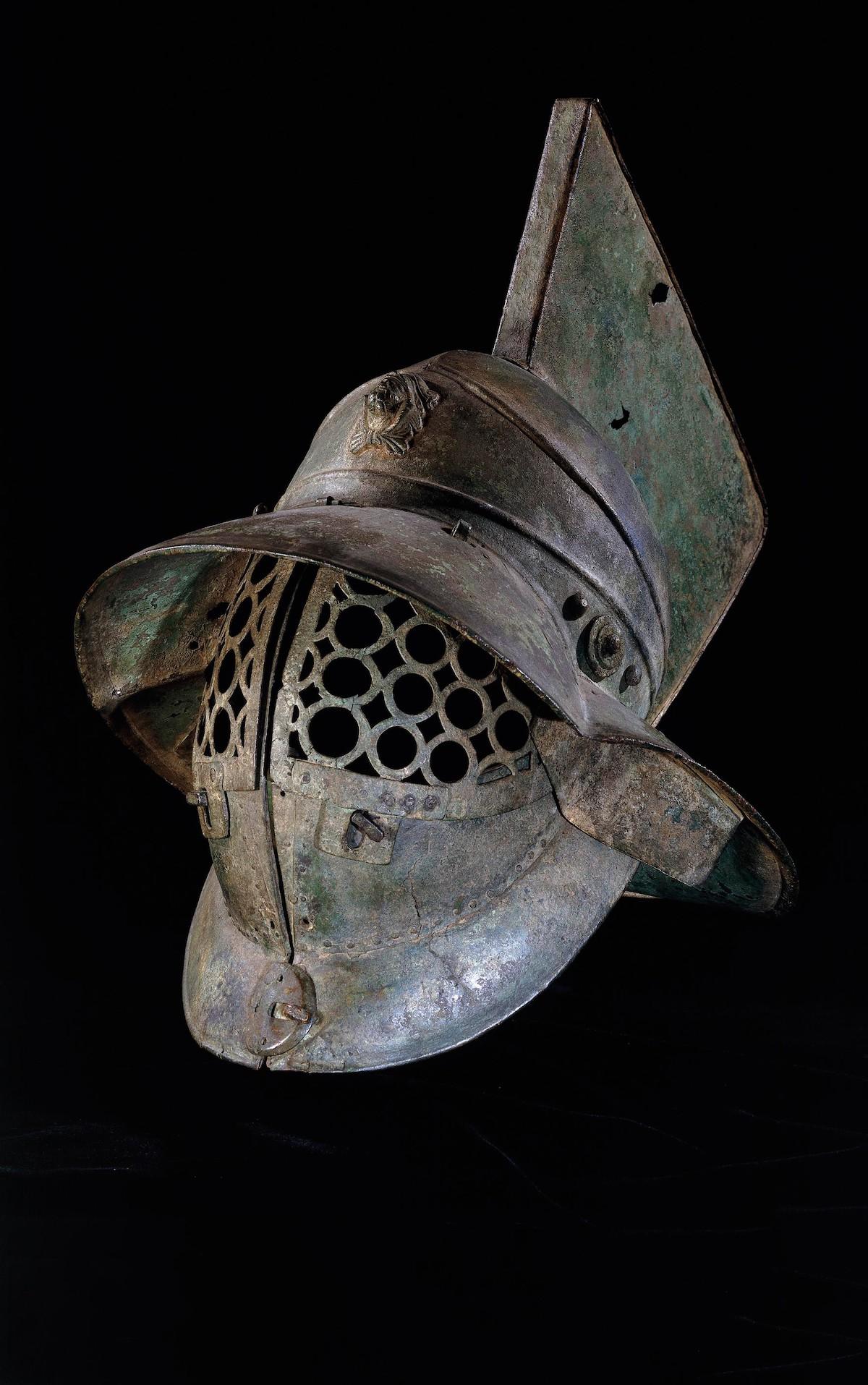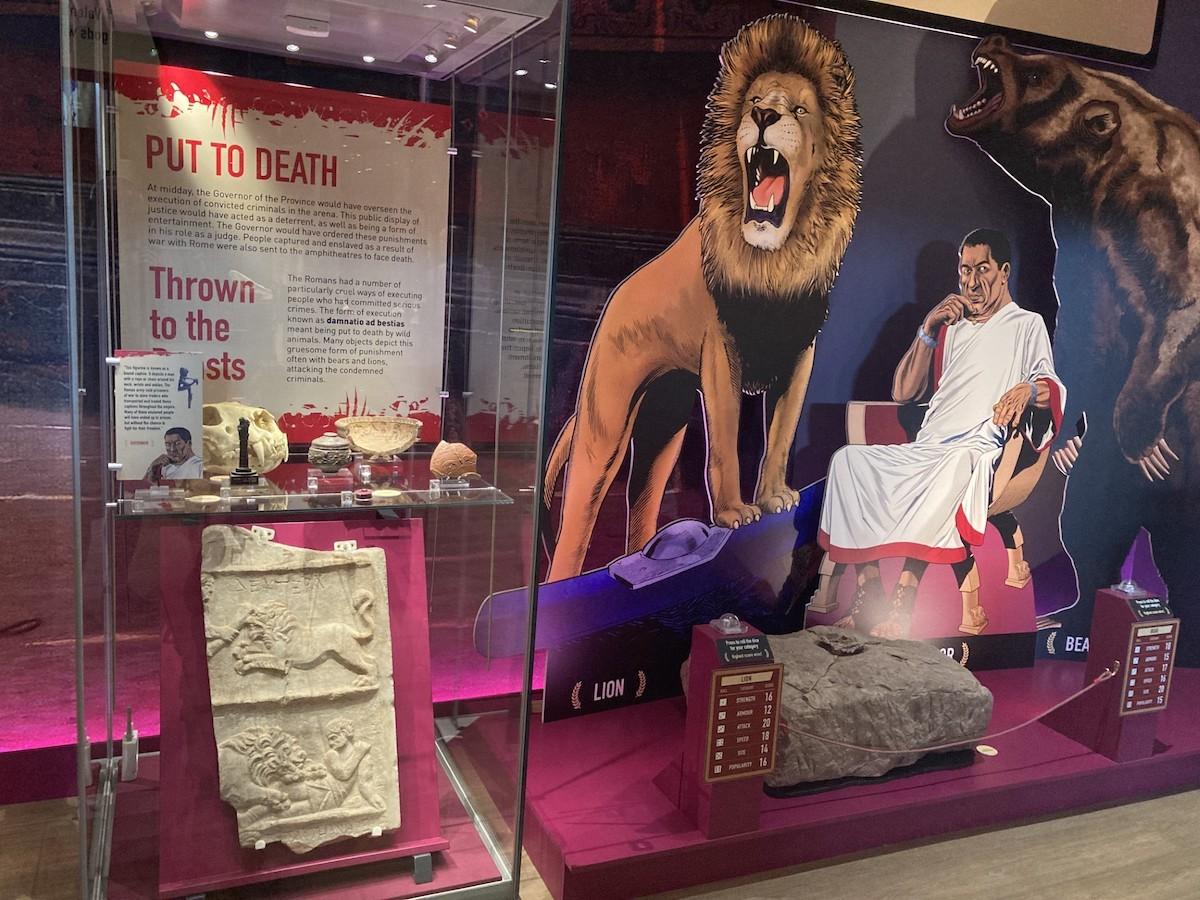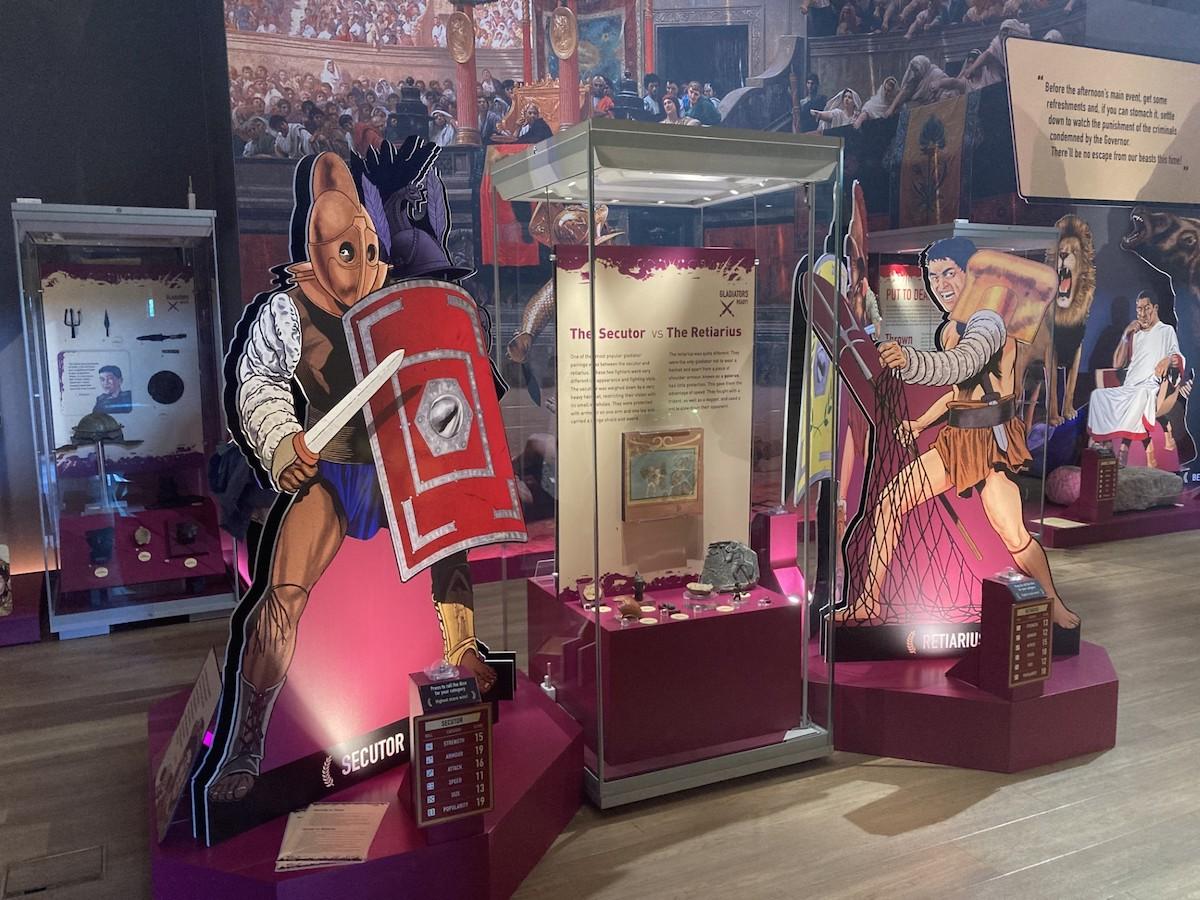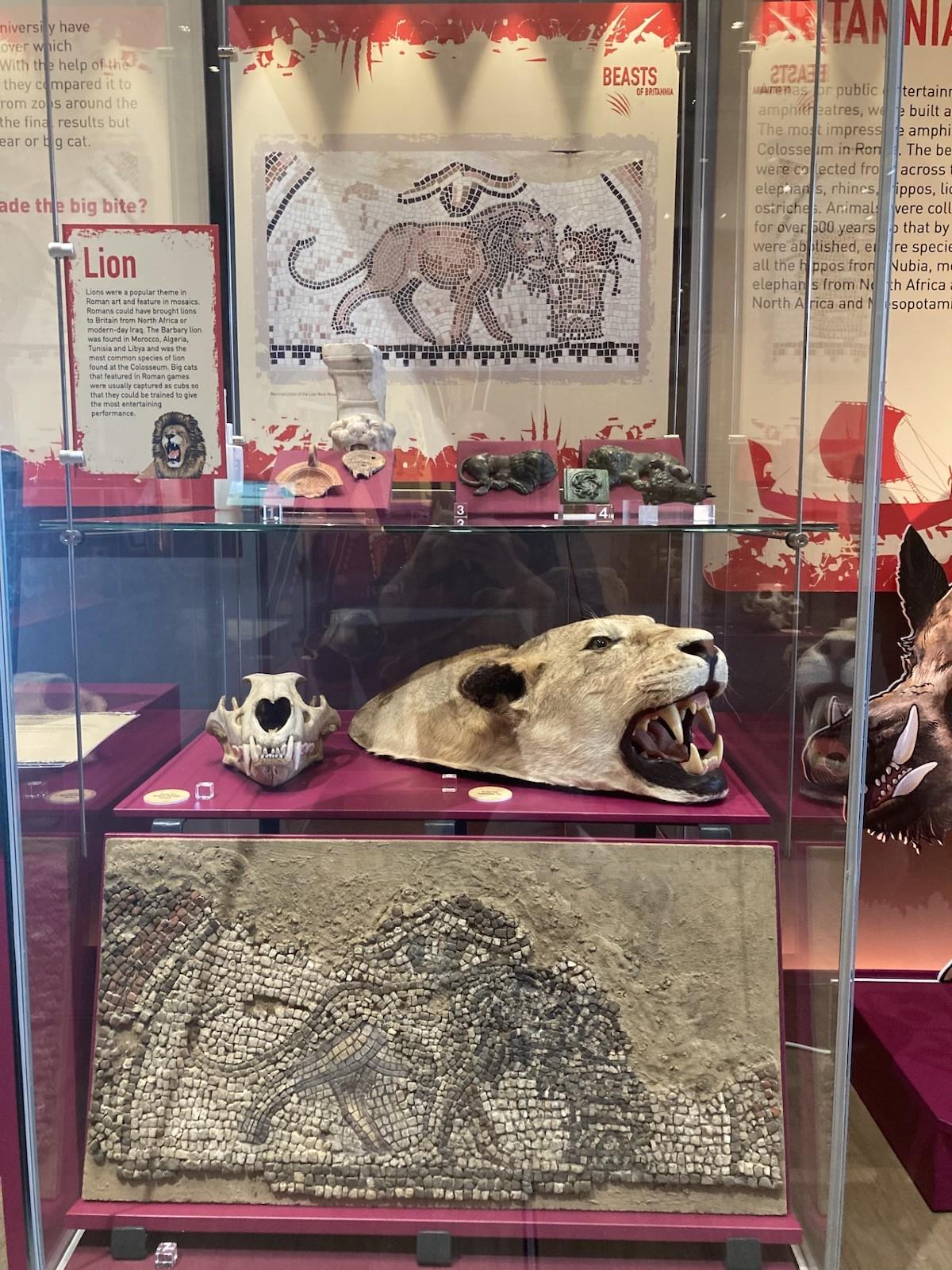Davis emphasizes the appropriateness of holding this exhibition at Colchester Museums. “We have a nationally and internationally significant collection of Roman archaeology. “We also have the Colchester Vase”.
One of the highlights of the show, the Colchester Vase is an extraordinary ceramic vessel found in a Roman grave in England in 1853 and dating to the late second century AD. Around the body of the pot are three scenes depicting an animal hunt, a pair of men fighting a bear, and two gladiators facing off against each other, Memnon and Valentinus, with their names, which were thought to be stage names, inscribed above. New research on the vase earlier this year has shown that it is made of local clay and therefore attests to gladiatorial activity in the area.
“The exhibition is not gladiators across the Roman world because you’ve always got to centre an exhibition. You’ve got to ask why are we doing it? Why are we doing it here?” But neither is the show just about Roman Colchester though, but rather contextualized within Roman Britain more broadly. “This means we get to include fantastic local objects as well as some big loans.”




